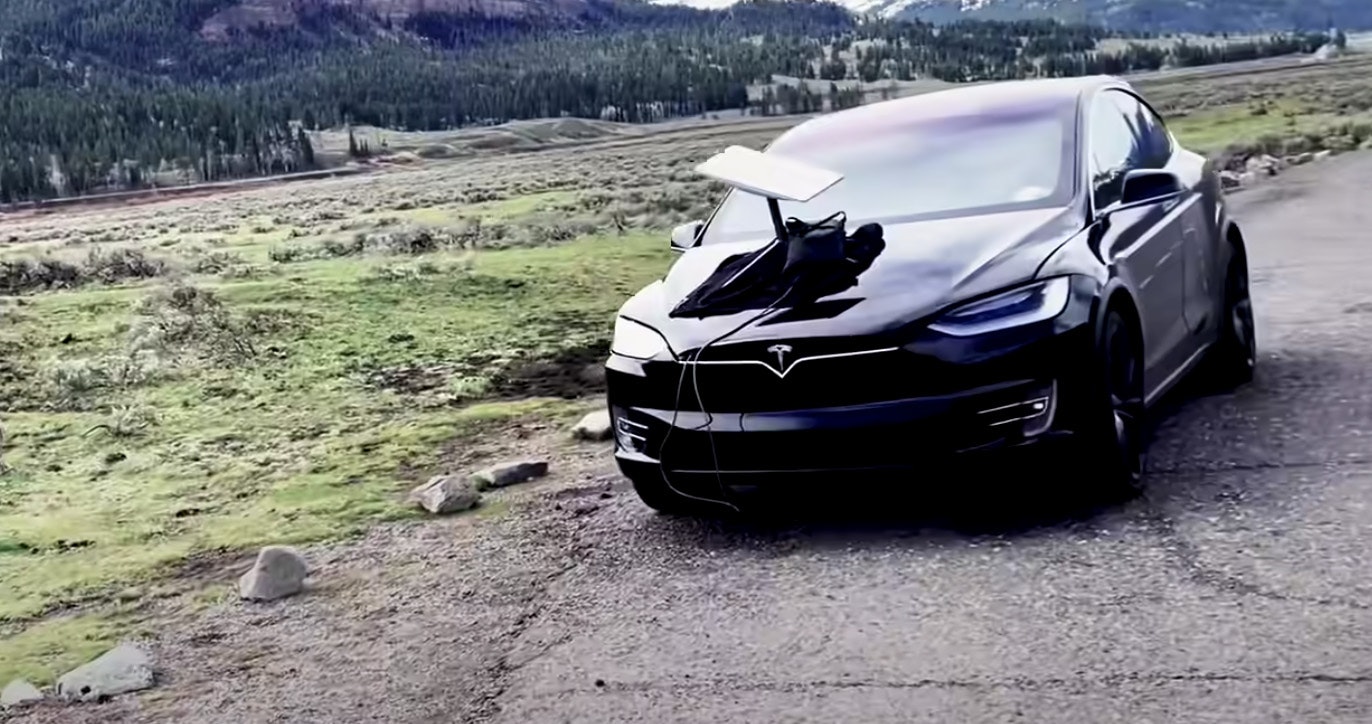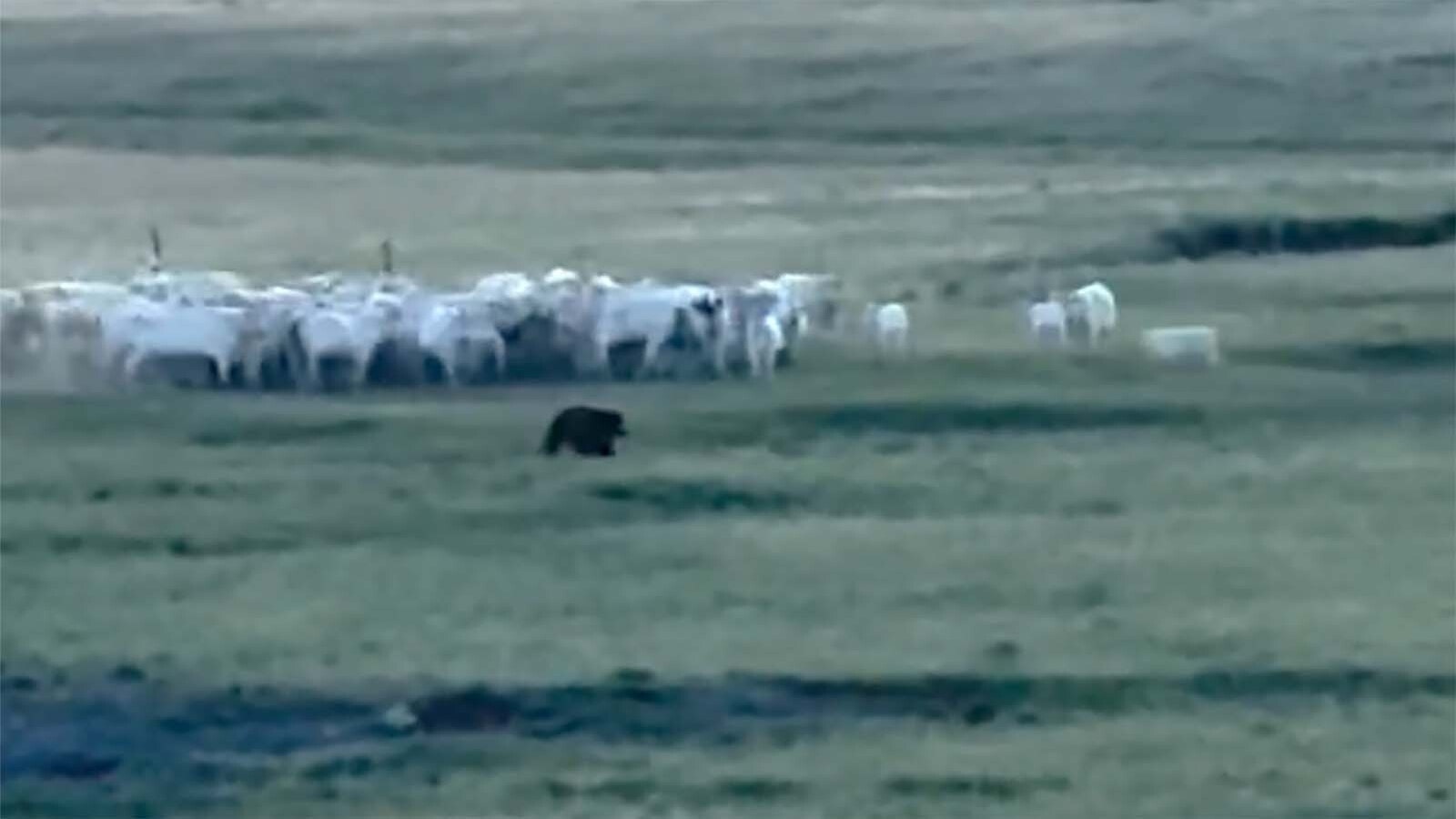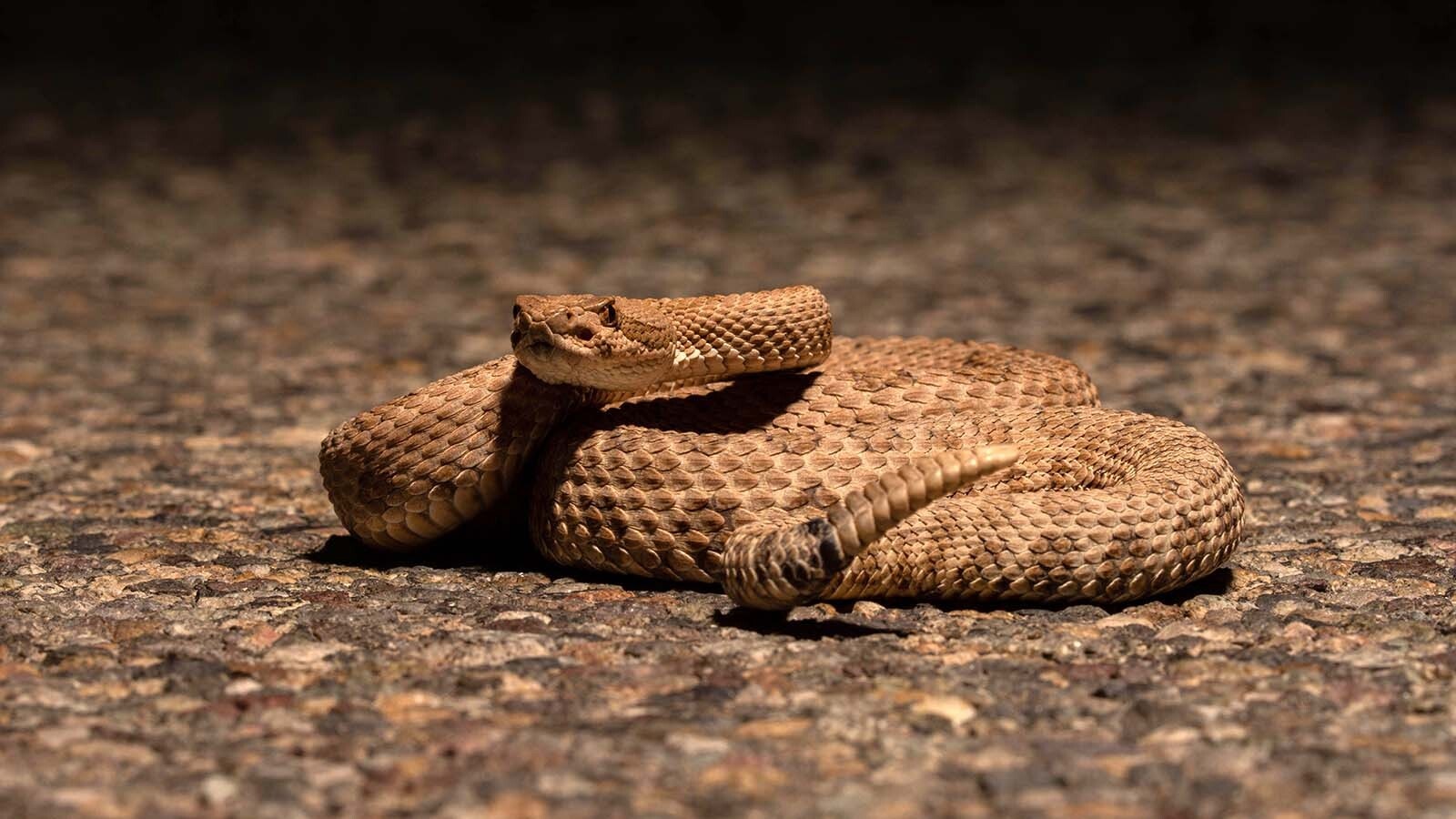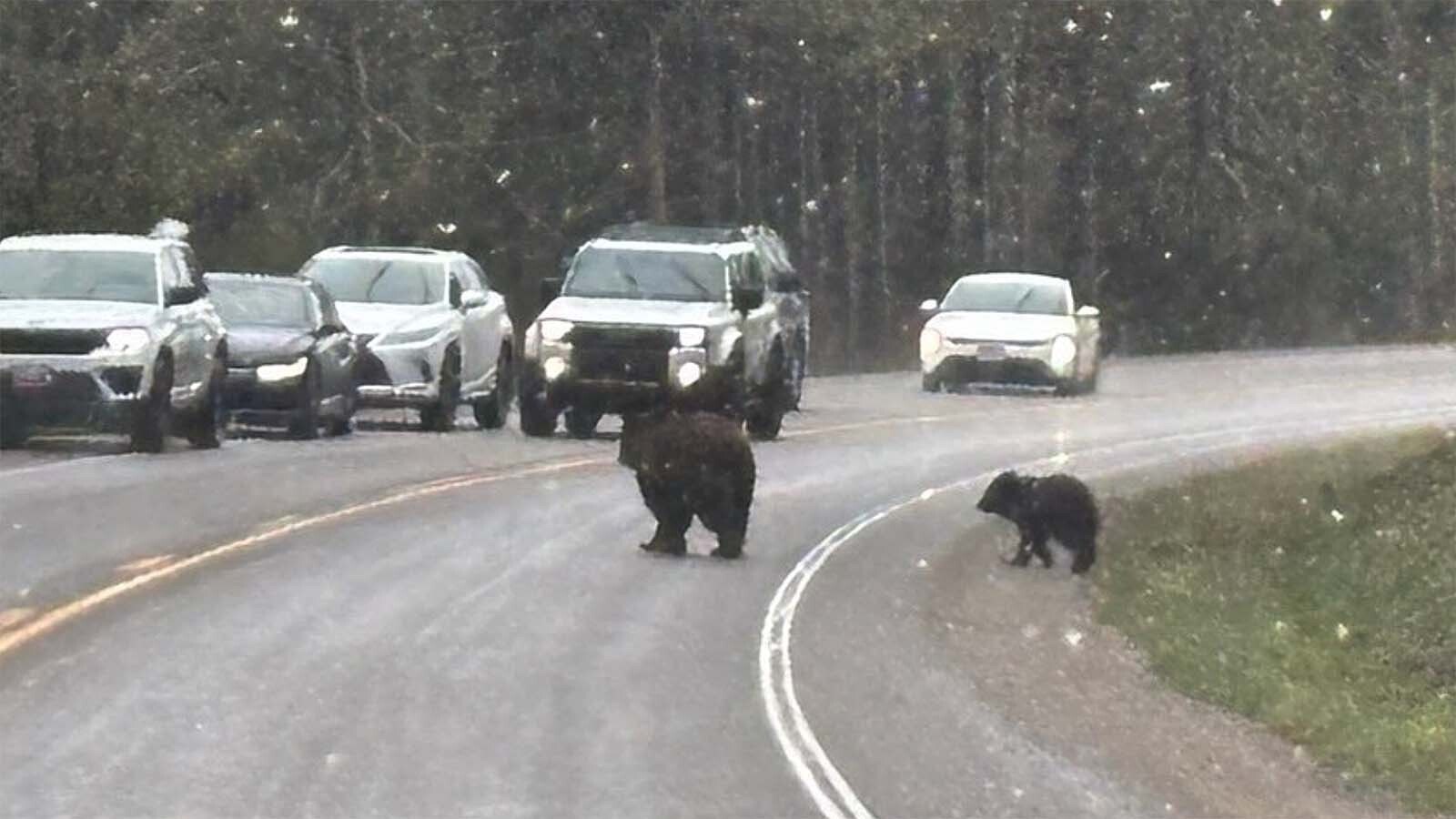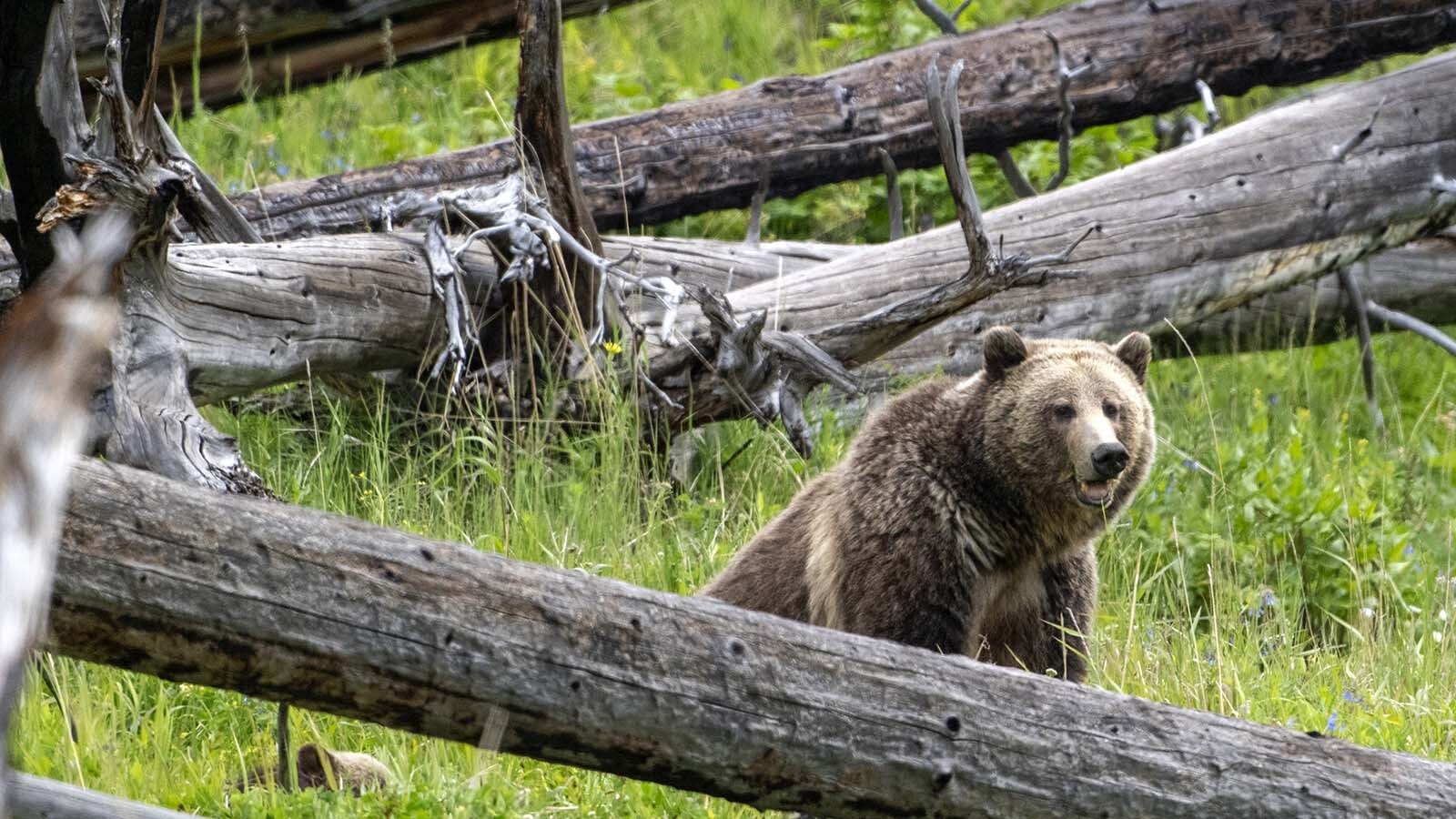As society becomes more dependent on the Internet, visitors to what used to be among the most remote areas of the country — Yellowstone and Grand Teton National Parks — are finding ways to stay connected.
One business owner from Idaho has taken that idea step even further as he uses advanced technology to work remotely from Yellowstone.
A video showing his Tesla on the side of the road in the Lamar Valley of Yellowstone with a Starlink satellite dish perched on its hood has created a bit of a stir.
Some commenters on the YouTube video think it’s a bit much. “Do we really need internet that bad?” one person asked.
On the other hand, “If I had the option to sit in the middle of the woods and work online I’d do it too,” read another.
And that’s exactly what the driver, Idaho Falls-based web designer Jarom Manwaring, told Cowboy State Daily he was doing last week when the video captured him multi-tasking while in Yellowstone National Park.
“That was the first time I really went out and used it,” Manwaring said of the Starlink satellite. “And it worked great. I had the time of my life. I saw a beautiful grizzly I got some pictures of, I saw a den of coyote cubs and a den of wolf cubs. I just had the best 24 hours, it was wonderful. Until I got back and saw that video.”
Manwaring owns his own web design company, Manwaring Web Solutions, which builds and markets websites. Because his business requires almost constant connectivity, if he ever wants to get away from the office, he needs to have a reliable internet connection wherever he goes.
“A business owns you as much as you own it,” Manwaring said. “You know, we host websites for hospitals and such, I need to make sure that I am accessible.”
Accessible Anywhere
Which is why Manwaring said he made the investment in a remote Starlink satellite system. A lifelong Idaho Falls resident, he said he grew up with Yellowstone as his backyard, and enjoys wildlife photography. But he said it was difficult to find cell service in the Park to check in with work.
Now, he said, he has the best of both worlds.
“When Starlink came out, I mean, that was really a game changer,” Manwaring said. “The idea of being able to be accessible whenever I needed to be, wherever I might be, and it was very exciting.”
The setup wasn’t cheap, Manwaring acknowledged – Starlink’s equipment costs about $600, with monthly charges of $100-$125, and he had to buy a 2,000-watt battery to power the portable satellite uplink equipment.
“I ended up buying one that’s called a Bluetti,” he said. “It’s big and heavy, but it powers everything. It’ll probably power a Starlink setup like that for maybe 24 hours total.”
Work Together
But because he drives a Tesla, Manwaring said, the two machines act symbiotically.
“One of the benefits of having a Tesla is, I’m sitting on a 100-kilowatt-hour battery, so that takes about 2% of my Tesla to fill that battery back up,” he said. “So I can have it plugged into my car while I’m driving around and keep it topped off.”
And the National Park Service is doing more to assist drivers of vehicles like Manwaring’s Tesla.
“Yellowstone has, I think, made more concerted efforts at having charge stations for electric vehicles than Grand Teton National Park,” said Manwaring. “To my knowledge, there’s not a single publicly available electric charging station in Grand Teton National Park; versus with Yellowstone, there are several of them – in Mammoth, there are some at Old Faithful, Lake, and Canyon, and then some outside the Park.
“If I go to West Yellowstone or Jackson, they have Tesla superchargers,” he continued. “I can fill my car from empty up to the brim in an hour. If you’re going to spend any amount of time in the Park in an electric vehicle, you need access to these.”
Never Turn Car Off
There are also ecological benefits to driving an electric vehicle through Yellowstone, Manwaring pointed out.
“There’s no exhaust in a Tesla,” he said. “Before I had my Tesla, I had a big F-350 that I would drive through the park, and I was always really conscious about, if I was sitting somewhere for too long, maybe waiting for a bear that’s expected to be in the area or something, of idling for too long.”
But when he would turn his truck off, Manwaring noted, he would either get cold or hot, depending on weather conditions.
“What’s awesome about a Tesla is you don’t really ever have to turn it off,” he said. “So you can get somewhere and stop and just tell it to keep the climate control on. And that’s one of the things that I love the most about the car, if I’m being honest.”
For drivers of electric and combustion-engine vehicles alike, cell service is also a priority. At a meeting in Cody last week, Grand Teton National Park Superintendent Chip Jenkins told community leaders that Grand Teton has improved its internet and cell service availability.
“When you visit Grand Teton this summer, one of the things that you’ll be able to do is make better use of your electronic devices,” Jenkins said. “Years of work – we have expanded the broadband and cell coverage in the Park. Just about every developed area in the park has cell coverage now.”
Not Addicted
But contrary to what the viral video inferred, Manwaring’s Tesla isn’t “addicted” to the internet.
“They do work best when they have a cell phone connection, because all of the infotainment and the navigation features rely on that,” he explained. “But (when you don’t have cell service), it’s not like all the screens go dark and you’re flying blind. It’s just that anything that required a data connection stopped working. Honestly, it doesn’t feel much different than if you were in a regular engine vehicle.”
Now that he’s got his remote work setup, Manwaring said he has the ability to spend more time doing the things he loves.
“I wouldn’t be able to spend very much time up there if I had to be disconnected,” he said. “I’d probably have to find a different hobby.”

